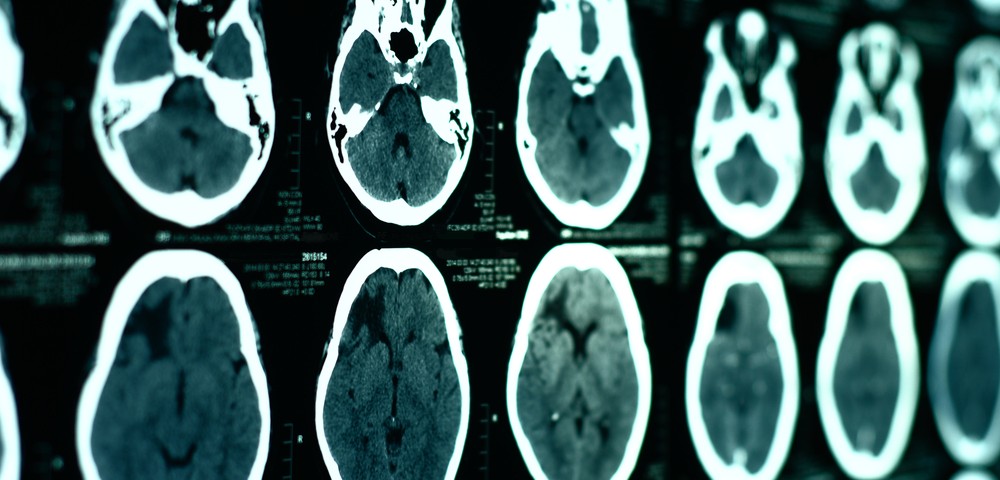MRI Scans of Facial Nerve Could Help Diagnose Spinal and Bulbar Muscular Atrophy, Study Finds
Written by |

High-resolution magnetic resonance imaging (MRI) scans of the facial nerve could provide a non-invasive and accurate way of detecting motor neuron impairments and aid doctors in making a diagnosis of spinal and bulbar muscular atrophy (SBMA), a small study suggests.
The study, “The facial nerve atrophy with spinal and bulbar muscular atrophy patients (SBMA): Three case reports with 3D fast imaging employing steady-state acquisition (FIESTA),” was published in the Journal of the Neurological Sciences.
Spinal and bulbar muscular atrophy (SBMA), also known as Kennedy’s disease, is a rare adult-onset form of spinal muscular atrophy (SMA) that mostly affects men. It is caused by mutations in the androgen receptor (AR) gene that result in defects in the androgen receptor protein.
This protein is found in multiple tissues through the body, but is present at high levels in motor neurons, which are involved in the control of voluntary muscles.
Symptoms mostly include muscle weakness and wasting (atrophy) in the arms and legs, and fasciculations (muscle twitches) in the limbs and bulbar muscles — muscles that control speech, swallowing, and chewing.
One of the most prominent features on histopathology tests is a marked deterioration of lower motor neurons (nerve cells that transmit messages from the brain stem and spinal cord to the muscles) through all spinal segments and brainstem motor nuclei, including the facial nerves.
Conversely, other cranial nerves and sensory neurons, which communicate the sensations of touch, temperature or pressure, are less severely affected.
SBMA is frequently misdiagnosed, as the disease is rare and its initial symptoms can mimic such motor neuron disorders as amyotrophic lateral sclerosis (ALS). To confirm the diagnosis, genetic testing is recommended.
However, considering that weakness and atrophy of the facial muscle is a major symptom, detailed examinations of this muscle could help doctors make a diagnosis.
No studies to date have investigated the diagnostic value of using magnetic resonance imaging (MRI) to evaluate cranial nerves in SBMA patients.
In particular, use of a high-resolution MRI technique called fast imaging employing steady-state acquisition (FIESTA), which allows a three-dimensional (3D) visualization of fine structures in nerves with great detail, could be an important diagnostic aid.
To explore the value of this technique for SBMA, researchers examined the facial cranial nerves of three SBMA patients using FIESTA.
They specifically screened a small region between the brain stem and the internal auditory canal where the facial nerve and the cochlear nerve — a cranial nerve that transmits sensory impulses from the ear to the brain — get into close proximity.
Three male patients, ages 48, 65 and 67 years, were analyzed. The younger man complained of progressive, mild limb muscle weakness, while the 65-year-old had a fine tremor in his hands and finger weakness. The 67-year-old experienced difficulty walking.
All had signs of facial muscle weakness and atrophy, with affected muscles around the mouth, the chewing muscles and tongue, and other regions of the face.
FIESTA scans revealed that patients’ facial nerves were shrunk in the auditory canal, whereas the cochlear nerves were relatively well preserved. In comparison with healthy controls, patients with SBMA had facial nerves with smaller surface areas and a larger ratio of the cochlear to facial nerve size.
Importantly, these small abnormalities were associated with lower motor neuron impairments, detected on nerve conduction studies and electromyography.
The three men underwent FIESTA four weeks before having their diagnosis confirmed by genetic testing, indicating the abnormal MRI findings were present early in the disease course, the researchers noted.
“MRI may be a highly effective and sensitive measure both in the description of facial nerve atrophy in patients with SBMA as well as in the detection of longitudinal changes in disease severity related to the [lower motor neuron] impairments of SBMA,” the researchers wrote.
FIESTA could complement clinical examinations and “provide a simple, non-invasive, accurate method for detecting LMN impairment” in these patients, they added.






